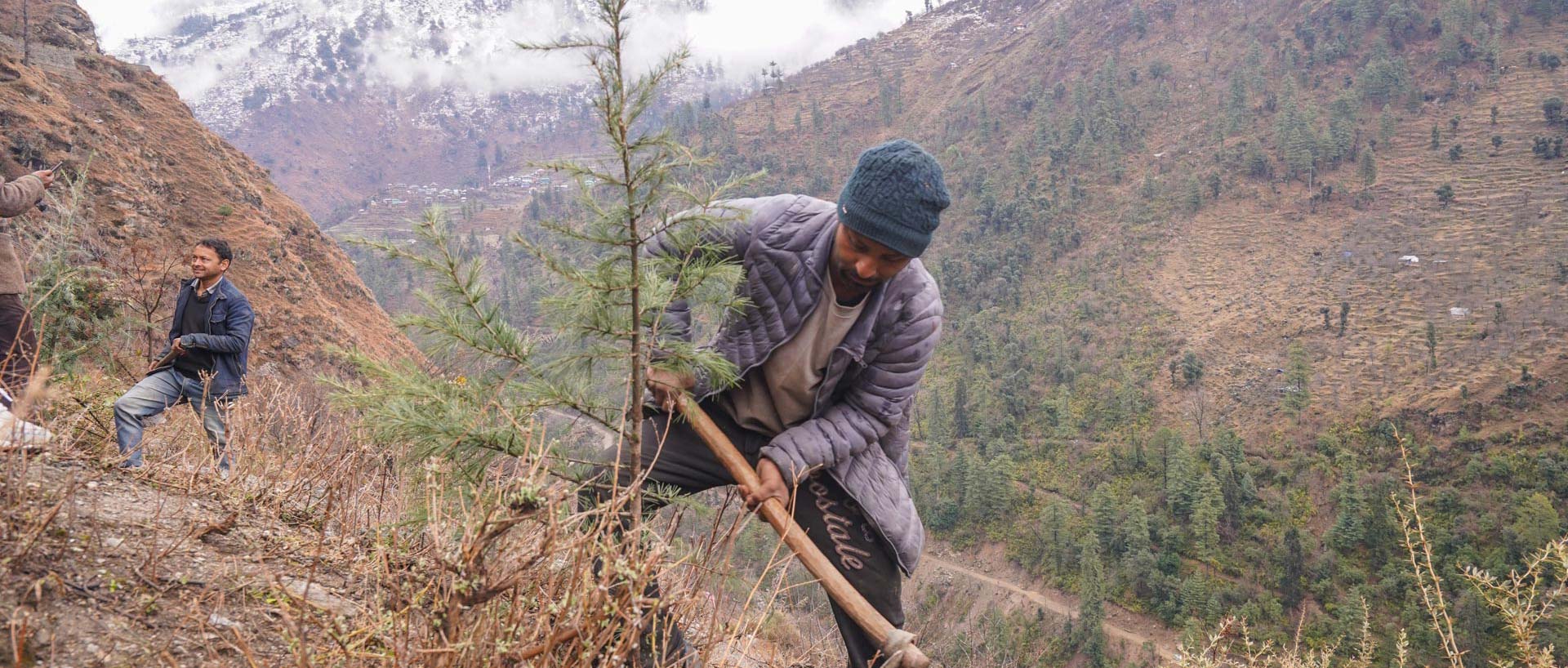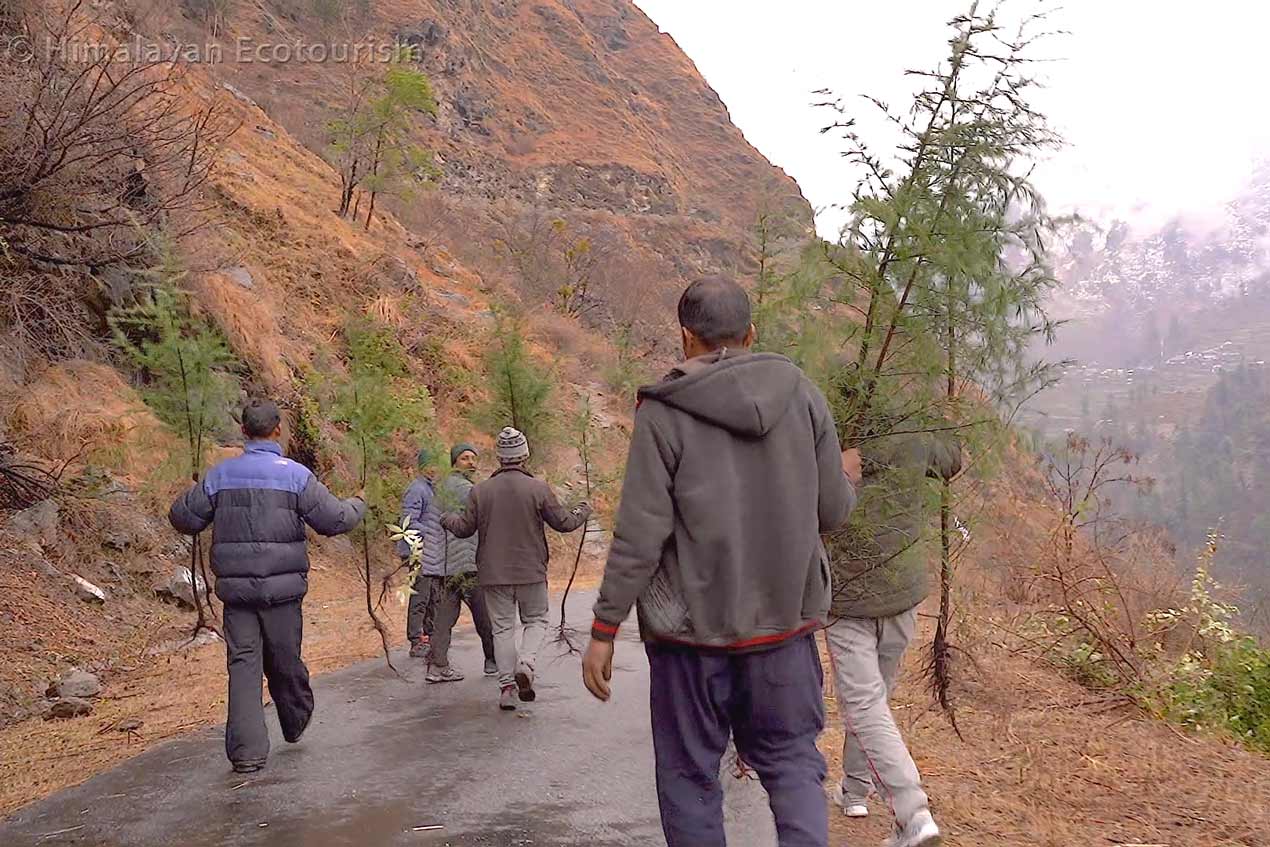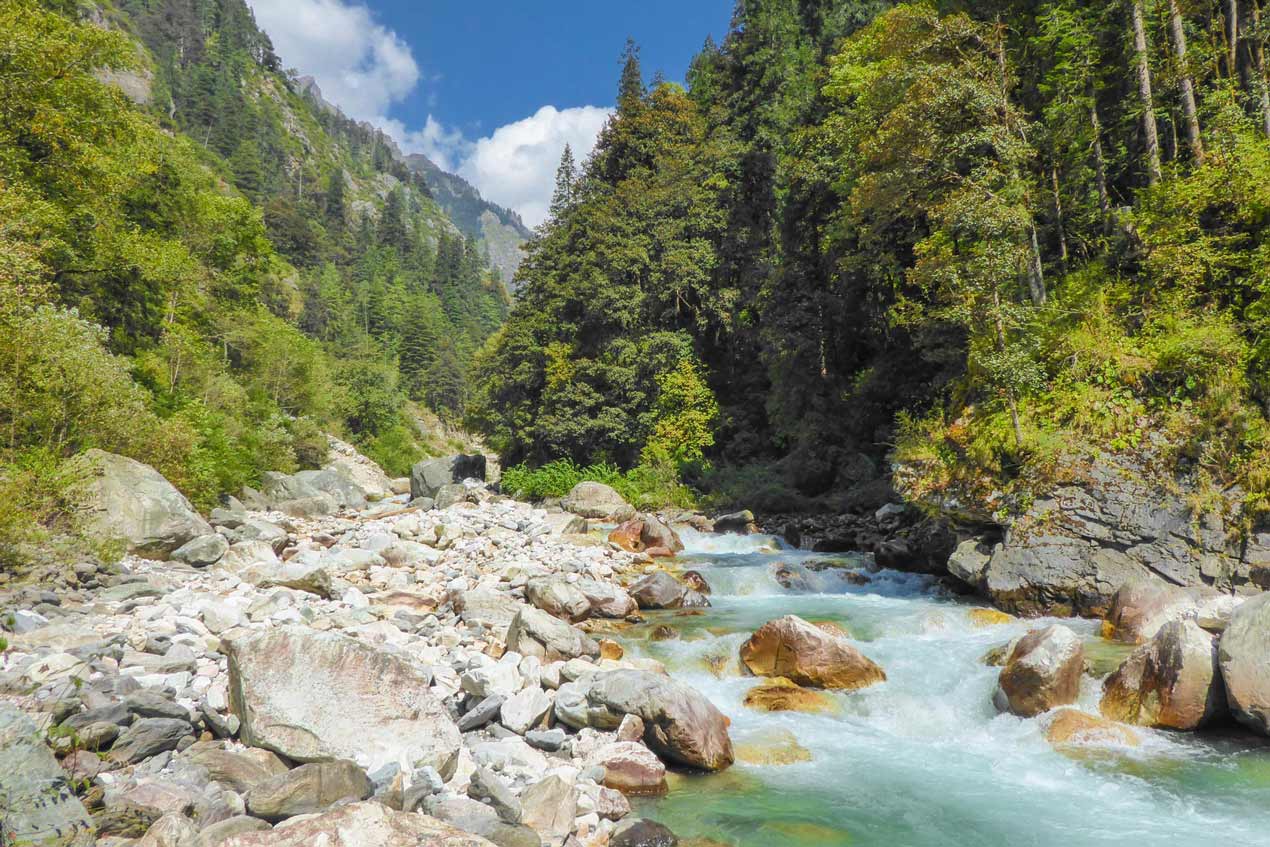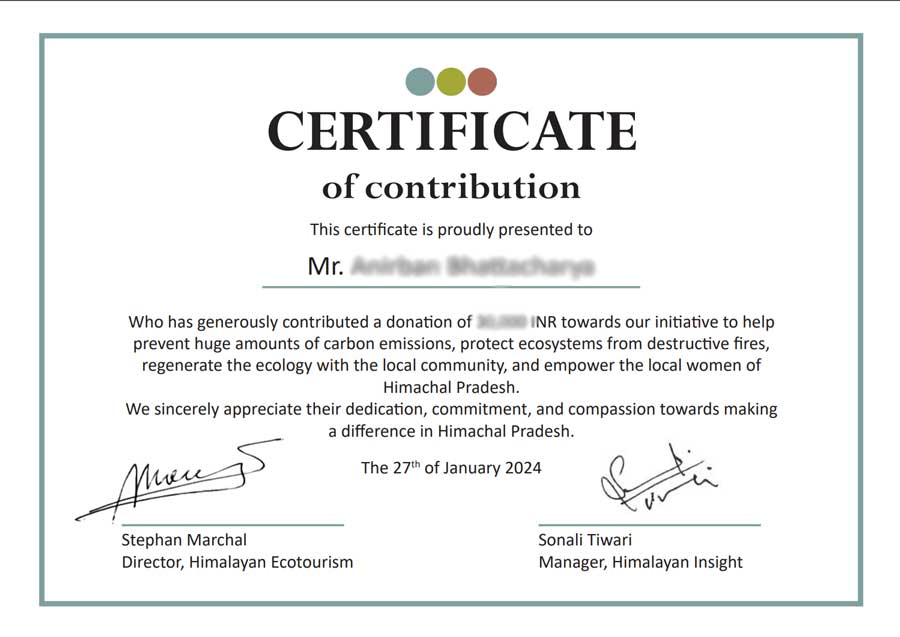Ecological restoration program in the Himalayas

Forewords
There is a dream that we all share at Heco : To restore a symbiotic relationship between the rural communities and all other forms of life in the Himalayas.
Our dream seems to be against the current trend. Most of the forest ecosystems around the world suffer severe degradations that all originate from human activities.
The loss of forest cover and biodiversity in the Himalayas is the cause of numerous adverse impacts on the climate changes, the water supply to the hundreds millions of people and the welfare of the local communities.
Globally there is an urgent need to regard our host planet as the origin of our living system and hence to respect it like our mother.
This is what we are trying to achieve at our level in the Himalayas.
Thanks to our social enterprise model, we have been active in :
- Empowering the local communities to enable them to undertake projects for social progresses and conservation,
- Mobilizing the locals to fight against intentional forest fires,
- Developing green technologies,
- And restoring quality forest ecosystems on barren lands in the Tirthan valley, near the Great Himalayan National Park.
All these efforts eventually led us to work on an integrated program for sustainable development in the Himalayas.
Our ecological restoration program enphazises on tree plantation drives, assisted regeneration and prevention of forest fires.
Inception of our program
Heco is a community-based social enterprise headquartered in the ecozone of the Great Himalayan National Park, Himachal Pradesh. The locals here used to be completely natural-resources dependent.
Most of them are agriculturists, they depend on wood for their fuel requirements and the forests provide them with fruits, fodder and other essentials.
However, the progress of the modern world paired with intense deforestation over the past few decades has given rise to the need for having a consistent cash income. They need money for education, healthcare, clothing, electronics and so on.
To help with that, Himalayan Ecotourism assisted the locals by setting up a cooperative society in 2014, to enhance their income. The cooperative functions in the field of trekking, it soon became one of the major players around the Great Himalayan National Park.
Since then we have been committed to providing employment for the 65 members of the cooperative.
The advent of the global pandemic halted all tourism related activity, thus taking away their primary source of income. This forced us to find an alternate source of livelihood that is labour-intensive, as most of the cooperative members are less educated.
We came up with the idea of a planned reforestation which addresses both the issues- unemployment and environmental degradation.
The society here is predominantly patriarchal. The role of women has been limited to household work, raising children and helping on the fields.
Himalayan Ecotourism has identified the need to involve them in the process of change for wholesome development, especially for natural resource conservation activities.
Objectives of the program
The aim of the program is to create an integrated community-based reforestation program, which has multifaceted benefits for the locals as well as the ecology.
Providing employment when tourism is down
The money that is brought in by the carbon offset program is channelised to the villagers by providing them employment in plantation activity. Moreover, The forested land will provide the villagers with fuel wood, fodder, medicinal plants, construction material and fruits.
Regeneration of the forest ecosystems
The primary goal is to regenerate the forest ecosystems and the wildlife habitats, which will bring back the balance to the ecology in the area. It also helps the groundwater table, helps stop soil erosion and provides a home for wild animals.
We also aim at optimizing the carbon sequestration in the long-run on the regenerated areas as we fund our project by selling carbon credits.
Moreover, the program ensures that the needs of the villagers are met naturally and they don’t need to illegally use the natural resources of the Great Himalayan National Park.
Involvement of the women
The involvement of women is essential. We are facilitating women from the village to teach students, help with sustenance of the reforestation program, natural resource management and also become trekking guides.
Enhancing the learning of the local kids
We are using innovative teaching methods to teach Computers and English to the schoolkids in Pekhri. There is also a special focus on personality development, skill development and raising awareness about ecology, health, politics, geography, etc.
How do we implement the program?
We work together for reforestation following the same principles that were set for Himalayan Ecotourism as a community-based social enterprise.
We are nurturing our values of fairness and transparency.
Our cooperative members are the main field workers so that they have an alternate source of income when tourism is down (off-season, pandemic, etc.)
A two square km area is allotted for reforestation activity.
The land to be reforested has been divided in 4 categories with the aim of optimising the ecological benefits, community benefits, protection of the newly planted trees from intentional forest fires and grazing cattle, and long term carbon sequestration.
The categories are as follows:
- Village forest : Just adjacent to the village, it grows trees for fruit, fodder and other products which benefit the villagers directly.
- Silvopastoral land : At a 15 minute walk away from the village, it has trees for fodder and fuelwood along with selected grasses for cattle grazing.
- Assisted natural regeneration land : Further away from the village. Here direct seeding of indigenous species is done and no grazing is allowed. The purpose is to enhance the quality of the natural ecosystem.
- The last category is only protected from forest fire and thrives naturally. It serves the purpose of carbon sequestration and maintaining ecological balance. Controlled grazing is allowed.
Plantation of the trees is just the first step. It is to be followed up by a sequence of tasks like protecting them from grazing, drought and intentional forest fires.
For this, we have a long running initiative called ‘Stop Forest Fires‘.
This creates an avenue for increasing the involvement of women in the process of reforestation. Entrusting them with this activity also helps elevate their social status and acts as a step towards gender equality becoming a reality in this patriarchal society.
A very important aspect of this is to create a trust with the local community. This is being done by focussing on both- immediate as well as long term benefits for them.
The children of Pekhri are being educated in vocational fields as well as environmental awareness. This will ensure a responsible outlook towards sustainability from the locals in the years to come.
Funding of our reforestation program
CLICK HERE TO OFFSET YOUR EMISSIONS
It is easy, fast and you become a contributor of our reforestation program.
Our reforestation is being funded by organizations or individuals who voluntarily decide to offset their carbon emissions.
There are several advantages in offsetting carbon emissions with Himalayan Ecotourism :
- The funds go directly to the local organization without any intermediary in between,
- Not only the reforestation contributes to sequestration of atmospheric carbon, but it greatly contributes to a sustainable development in the Himalayas,
- We regularly report the progress of the program on this page in the form of photos of the reforested areas and a database that shows the record of all the plantation.







